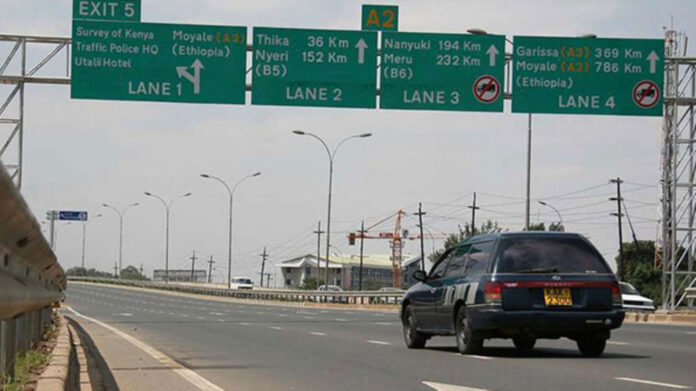Road transport is a major mode of transportation in Kenya, making up 93% of all local transport. On Kenyan roads, drivers encounter various signs that direct them to specific destinations and guide them on the types of roads to use.
The Ministry of Transport and Infrastructure oversees all formal roads in Kenya. Sub-entities that implement the Ministry’s vision and maintain roads include the Kenya Urban Roads Authority (KURA), the Kenya National Highways Authority (KeNHA), the Kenya Rural Roads Authority (KeRRA), and the Kenya Wildlife Service (KWS).
Have you ever wondered why Kenyan roads are classified using letters? Kenyan roads fall into six categories: A to E, plus various special road classes. These letters and some numbers indicate the type and status of the road within the national network.
Each class is based on the road’s function and the administrative level it serves. Interestingly, this road naming system was developed over 30 years ago.
The Kenya National Highway Authority (KeNHA) manages national trunk roads, which are classified into three main categories: Class A, B, and C roads.
KeNHA roads
1. Class A roads
These are known as International Trunk Roads. They connect centres of international importance, cross international boundaries, or terminate at international ports.
For example, the A109, commonly known as Mombasa Road, is the main route connecting Nairobi, Kenya’s capital, to Mombasa, the country’s port city.
It also forms a big segment of the Northern Corridor and connects with the A104, which links Nairobi to the Ugandan border town of Malaba.
The A1 stretches from the Tanzania border at Namanga to the South Sudan border in Lokichogio. The A2 goes from Nairobi to the Ethiopian border at Moyale, and the A3 runs from Thika to Garissa.
2. Class B roads
These roads are called National Trunk Roads. They connect important places like county headquarters, main towns, and urban centres. They also connect major A roads.
For example, the road B3 runs from Kisii to Nairobi, passing through the Maimahiu route and connecting with the A104 just past Limuru town. B1 road runs from Busia to Nakuru.
Types of Kenyan passports and their application fees
3. Class C roads
Also called primary roads, these roads connect important centres within a county to each other or to higher-class roads. For example, the C63 road links Ruiru and Kiambu via Tatu City.
KeRRA Roads
4. Class D roads
These roads, also known as secondary roads, connect local centres to more important ones or higher-class ones. For example, the road that links Mwiki to Kasarani.
5. Class E roads
A Class E road links a minor centre, market, or local area. These roads are primarily found in rural regions.
6. Special Class roads
- Class F roads – Forest Roads
- Class G roads – Roads serving schools, hospitals and government institutions
- Class K roads – Roads leading to Coffee (Kahawa) growing areas
- Class L roads – Roads accessing settlement schemes.
- Class P roads – National Park roads
- Class R roads – Roads leading to rural areas
- Class S roads – Roads accessing sugar-growing areas
- Class T roads – Roads accessing tea growing areas
- Class U roads – Unclassified rural roads including those that lead to areas with mineral deposits
- Class W roads – Roads accessing wheat growing areas.








